Home>Interior Design>How Do I Declutter My Clothes Fast? The Top 10 Strategies Organizers Swear By


Interior Design
How Do I Declutter My Clothes Fast? The Top 10 Strategies Organizers Swear By
Modified: January 22, 2024
Discover the top 10 strategies that interior design organizers swear by to declutter your clothes quickly and efficiently. Learn how to transform your space and create a clutter-free wardrobe.
(Many of the links in this article redirect to a specific reviewed product. Your purchase of these products through affiliate links helps to generate commission for Storables.com, at no extra cost. Learn more)
Introduction
Decluttering your clothes can be a daunting task, especially if you have accumulated a large wardrobe over the years. However, with the right strategies in place, you can tackle this challenge efficiently and effectively. Organizers and interior design experts swear by various techniques that can help you declutter your clothes fast, and in this article, we will explore the top 10 strategies that can transform your cluttered wardrobe into an organized and serene space.
Clutter not only makes it difficult to find what you need but also adds unnecessary stress to your daily routine. By decluttering your clothes, you can create a more functional and visually appealing space, where getting ready in the morning becomes a breeze. Whether you’re downsizing, moving into a new home, or simply looking to simplify your life, these strategies will guide you towards a clutter-free closet.
It’s important to remember that decluttering is a personal journey, and what works for one person may not work for another. Feel free to adapt and modify these strategies to suit your specific needs and preferences. With that said, let’s dive into the top 10 strategies that organizers swear by to declutter clothes fast.
Key Takeaways:
- Transform your cluttered wardrobe into an organized and serene space with top strategies like setting clear goals, using the “Three Pile” method, and creating a capsule wardrobe. Embrace the journey of decluttering and enjoy the mental clarity it brings.
- Maintain a clutter-free wardrobe by implementing a “one in, one out” policy, practicing mindful shopping, and utilizing vertical space and storage solutions. Regular evaluation and consistent organization are key to long-term success.
Strategy 1: Set a Clear Goal
Before embarking on any decluttering project, it’s important to set a clear goal for yourself. This will give you a sense of purpose and motivation throughout the process. Ask yourself what you want to achieve by decluttering your clothes. Is it to create more space? Streamline your wardrobe? Or maybe adopt a minimalist lifestyle?
Having a specific goal will help you make decisions about what to keep and what to let go of. For example, if your goal is to create a minimalist wardrobe, you’ll want to focus on keeping only the essentials and getting rid of anything that doesn’t align with that vision.
Write down your goal and keep it visible during the decluttering process. This will serve as a reminder and keep you focused on your end objective. It’s easy to get overwhelmed and lose motivation, so having a clear goal will help you stay on track and make the tough decisions.
Remember, your goal can be as simple or as ambitious as you want it to be. The key is to make it personal and meaningful to you. Setting a clear goal is the first step towards a successful decluttering journey.
Strategy 2: Divide and Conquer
When faced with a large wardrobe, the thought of decluttering everything at once can be overwhelming. That’s where the “divide and conquer” strategy comes in. Instead of tackling your entire wardrobe in one go, break it down into smaller, more manageable sections.
Start by selecting a category of clothing to focus on, such as tops, bottoms, or accessories. Then, take all the items in that category out of your closet and lay them out in front of you. Seeing everything at once will give you a better perspective on how much you have and make it easier to make decisions.
Next, go through each item and ask yourself some critical questions. Does it fit well? Have you worn it in the past year? Does it still match your personal style? As you evaluate each piece, create separate piles for items to keep, items to donate or sell, and items to discard.
Once you have gone through a specific category, move on to the next one. Taking it one step at a time will prevent you from feeling overwhelmed and will allow you to focus on each section more effectively.
Dividing your wardrobe into smaller sections also gives you a sense of accomplishment as you complete each category. It’s easier to stay motivated when you can see the progress you’re making.
Remember, the goal is not to rush through the process but to thoroughly evaluate each item and make intentional choices. By dividing and conquering, you can declutter your clothes in a systematic and manageable way.
Strategy 3: Use the “Three Pile” Method
The “Three Pile” method is a simple and effective way to declutter your clothes. It involves categorizing your items into three piles: keep, donate/sell, and discard.
Start by going through your wardrobe item by item and assess whether it’s something you want to keep. Ask yourself if it still fits well, if you feel confident wearing it, and if it aligns with your personal style. If the answer is yes, place it in the keep pile.
For items that no longer serve you or bring you joy, decide whether they are in good enough condition to be donated or sold. If they are, place them in the donate/sell pile. Clothes that are stained, torn, or beyond repair should go in the discard pile.
When deciding what to keep, be mindful of the concept of “enough.” Most of us have more clothes than we actually need, so it’s important to only keep what truly adds value to your wardrobe. Letting go of items that no longer serve you will create more physical and mental space.
Once you have sorted through all your clothes, revisit the donate/sell pile. If you decide to sell, you can use online platforms or organize a garage sale. If you choose to donate, research local charities or organizations that accept clothing donations.
By using the “Three Pile” method, you simplify the decision-making process and eliminate any ambiguity. It helps you declutter your clothes efficiently while making intentional choices about what to keep and what to let go of.
Remember, decluttering is not just about getting rid of things—it’s about curating a wardrobe that reflects your current style and supports your lifestyle. The “Three Pile” method is an excellent tool to achieve this and create a more streamlined and clutter-free closet.
Strategy 4: Apply the KonMari Method
Developed by organizing expert Marie Kondo, the KonMari method has gained worldwide recognition for its transformative approach to decluttering and organizing. This method focuses on keeping only items that spark joy and letting go of anything that doesn’t.
To apply the KonMari method to your clothes, gather all your clothing items in one place. Hold each item in your hands and ask yourself, “Does this spark joy?” Pay attention to your emotional response. If an item brings you happiness and a sense of positivity, keep it. If it doesn’t, thank it for its service and let it go.
The KonMari method encourages you to appreciate the value that each item has brought into your life, even if it’s time to part ways with it. This mindset shift can help you let go of attachment to material possessions and create a more intentional and joyful wardrobe.
When folding and storing clothes, follow the folding techniques recommended by Marie Kondo. This involves folding items into small rectangles and storing them vertically in drawers or containers. This not only maximizes space but also allows you to see all your clothes at a glance, preventing items from getting buried and forgotten.
Remember, the KonMari method is about consciously choosing what to keep and what to let go of based on how each item makes you feel. It encourages you to create a wardrobe that truly sparks joy and aligns with your authentic self.
Applying the KonMari method to your clothes may take some time and effort, but the results are well worth it. Decluttering through joy can lead to a more intentional and harmonious living environment.
Keep in mind that the KonMari method can be adapted to suit your personal preferences and values. The key is to focus on what brings you joy and to let go of anything that no longer serves you.
Strategy 5: Implement the Hanger Trick
The hanger trick is a clever strategy that can help you identify which clothes you actually wear and which ones are just taking up space in your closet. It’s a great method to get a clear visual representation of your clothing habits.
To implement the hanger trick, start by turning all your clothes hangers in your closet in the opposite direction. As you wear and rehang your clothes, put them back with the hangers facing the normal direction. This way, over time, you will see which clothes remain untouched.
After a few months, take a look at your closet and observe the clothes that still have hangers facing the opposite direction. These are the items that you haven’t worn during that time period. This gives you a clear indication of which clothes you can consider decluttering.
When assessing the untouched clothes, ask yourself why you haven’t worn them. Are they out of season? Do they no longer fit? Have your style preferences changed? Use these insights to make decisions about what to keep and what to let go of.
The hanger trick is an effective way to create a more functional and curated wardrobe. It helps you identify the clothes that truly add value to your daily life and highlights the items that may be better off donated, sold, or discarded.
Remember, our clothing choices have a significant impact on our daily lives. By implementing the hanger trick, you can become more aware of your clothing habits and make intentional choices about what to keep in your closet.
As you continue to use the hanger trick, you’ll develop a better understanding of your personal style and clothing needs. This knowledge can guide future purchases and help you maintain a clutter-free and organized wardrobe.
Set a timer for 15 minutes and quickly go through your clothes, making quick decisions on what to keep, donate, or toss. This time limit will help you stay focused and make progress fast.
Strategy 6: Create a Capsule Wardrobe
A capsule wardrobe is a collection of essential, versatile, and timeless clothing items that can be mixed and matched to create a variety of outfits. It’s a minimalist approach to dressing that can simplify your wardrobe and make getting ready in the morning a breeze.
To create a capsule wardrobe, start by assessing your personal style and lifestyle. Consider the colors, patterns, and silhouettes that you feel most comfortable and confident in. Keep in mind that the key is to choose pieces that can be easily layered and styled together.
As a general guideline, aim for around 30-40 well-curated items that can be worn interchangeably throughout each season. This includes tops, bottoms, dresses, outerwear, and shoes. However, feel free to adjust these numbers based on your preferences and needs.
When selecting items for your capsule wardrobe, focus on quality over quantity. Invest in high-quality pieces that will stand the test of time and withstand frequent wear. This will not only save you money in the long run but also reduce the need for constant shopping and replenishing.
Remember, versatility is key when it comes to a capsule wardrobe. Choose timeless basics such as solid-colored tops, neutral bottoms, and classic outerwear that can be dressed up or down. Accentuate your outfits with carefully selected accessories, such as scarves, belts, and statement jewelry, to add a touch of personality.
Creating a capsule wardrobe allows you to simplify your clothing choices and eliminates decision fatigue. It promotes a more sustainable and mindful approach to fashion, encouraging you to make intentional purchases and avoid unnecessary clutter.
Once you have established your capsule wardrobe, maintaining it is crucial. Regularly assess your items and remove anything that no longer fits, is worn out, or no longer aligns with your personal style. This will ensure that your capsule wardrobe remains functional and curated throughout the seasons.
By embracing the concept of a capsule wardrobe, you can create a streamlined and efficient closet that reflects your personal style and simplifies your daily dressing routine.
Strategy 7: Donate or Sell Unwanted Items
As you declutter your clothes, you’re bound to come across items that no longer serve you or spark joy. Instead of letting these items take up valuable space in your closet, consider donating or selling them.
Donating unwanted clothes is a great way to give back to the community and help those in need. Research local charities or organizations that accept clothing donations and find out their guidelines for acceptable items. Ensure that the clothes are in good condition and clean before donating them.
If you prefer to earn some extra cash, consider selling your unwanted clothes. Online platforms such as eBay, Poshmark, and Depop make it easy to list and sell pre-loved clothing items. Take clear, well-lit photos and provide accurate descriptions to attract potential buyers. Make sure to price items fairly to encourage a quick sale.
Organizing a garage sale or participating in a local flea market can also be a fun way to sell your unwanted clothes. Gather your items, set up a designated area, and promote the sale to attract buyers. This method allows you to interact directly with customers and negotiate prices.
Whichever method you choose, donating or selling unwanted clothes helps to promote sustainability and reduce textile waste. Clothes that no longer serve you may find a new home with someone who will cherish and appreciate them.
Remember, before donating or selling, thoroughly evaluate each item and ensure that it’s in good condition. It’s important to give back in a meaningful way and provide quality items to those who may benefit from them.
By donating or selling unwanted items, not only are you decluttering your space, but you’re also contributing to a more sustainable and compassionate fashion industry.
Strategy 8: Use Vertical Space
When it comes to maximizing storage in your closet, utilizing vertical space is key. Many closets have unused space above the hanging rod or on the walls that can be utilized to create additional storage options.
One effective way to optimize vertical space is by installing shelves or hanging organizers above the hanging rod. These shelves can be used to store folded clothes, shoes, accessories, or bins for smaller items. Hanging organizers with compartments are also great for storing scarves, belts, and other accessories.
Another option to consider is using hanging organizers or hooks on the back of closet doors. These can be used to hang handbags, belts, or even jewelry organizers. This allows you to keep these items easily accessible and reduces clutter in your main closet space.
If you have high ceilings in your closet, consider installing a second hanging rod or a double-decker closet rod. This doubles the hanging space available and allows you to store more clothes without taking up additional floor space.
For shoes, consider using vertical shoe racks or shoe cubbies. These can be mounted on the back of the closet door or installed on the walls. Vertical storage for shoes not only saves space but also allows you to see all your footwear at a glance.
Utilizing vertical space in your closet not only optimizes storage but also creates a more organized and visually appealing space. It increases the functionality of your closet and makes it easier to find and access your clothes and accessories.
Remember to measure your closet space and plan your vertical storage solutions accordingly. Opt for adjustable shelving or modular units that can be customized to fit your specific needs. This flexibility allows you to adapt your storage as your wardrobe evolves.
By utilizing the often overlooked vertical space in your closet, you can significantly increase your storage capacity and create a more efficient and organized wardrobe.
Read more: How To Declutter Your House Fast
Strategy 9: Organize with Storage Solutions
Having the right storage solutions can make all the difference in keeping your clothes organized and easily accessible. Here are some effective storage solutions to consider:
1. Drawer dividers: Use drawer dividers to separate and categorize different types of clothing, such as socks, underwear, and accessories. This prevents items from getting mixed together and makes it easier to find what you need.
2. Clear bins or containers: Transparent bins or containers are perfect for storing items that you want to keep neatly tucked away but still easily visible. Use them for off-season clothes, special occasion items, or bulky sweaters.
3. Storage ottomans or bench seating: Incorporate multifunctional furniture into your closet, such as ottomans or benches with hidden storage. These provide a seating area while also offering additional space to store items like shoes or blankets.
4. Shelf dividers: Shelf dividers are great for keeping stacks of folded clothes, such as sweaters or jeans, neatly in place. They prevent items from toppling over and help maintain a tidy appearance.
5. Jewelry organizers: Invest in a jewelry organizer to keep your necklaces, bracelets, and earrings tangle-free and easily accessible. There are various options available, from hanging organizers to countertop trays.
6. Tie and belt racks: Dedicated racks or hangers for ties and belts help keep them organized and prevent them from getting tangled. Look for ones with multiple hooks or rotating features for easy access.
7. Over-the-door organizers: Maximize door space with over-the-door organizers that have pockets or hooks. These are ideal for storing smaller items like scarves, hats, or small handbags.
8. Vacuum-sealed bags: If you have limited storage space or want to store off-season clothes, vacuum-sealed bags can be a game-changer. They compress the items, reducing bulk and maximizing storage space.
Remember to assess your specific storage needs and space constraints before investing in storage solutions. Customize your choices based on the type and amount of clothing you have.
By incorporating these storage solutions into your closet, you can create a more organized and efficient space. Everything will have a designated place, making it easier to find and maintain a clutter-free wardrobe.
Strategy 10: Maintain the Clutter-Free System
Once you have decluttered and organized your clothes, it’s important to establish a system that helps you maintain a clutter-free wardrobe in the long run. Here are some tips to help you maintain your newly organized space:
1. Regular evaluation: Set aside time every few months to reassess your wardrobe. Take a critical look at the items you have and ask yourself if they still align with your personal style and needs. Remove any clothes that no longer serve you and donate or sell them.
2. One in, one out: Implement a “one in, one out” policy for new clothing purchases. For every new item you bring into your wardrobe, commit to parting with an old item. This helps prevent the accumulation of too many clothes and ensures that your wardrobe remains well-curated.
3. Consistent organization: Make a habit of returning items to their designated spots after each use. This prevents the build-up of clutter and maintains the order you have established. Dedicate a few minutes each day to tidy up your clothes and accessories.
4. Seasonal rotation: Consider storing off-season clothing in a separate space to free up room in your main closet. Vacuum-sealed bags or storage bins are great for keeping these items protected and out of the way until they are needed again.
5. Group by category: Keep like-items together in your closet, such as tops, bottoms, dresses, and jackets. Within each category, consider organizing by color or style for a visually pleasing and efficient layout.
6. Invest in quality: When adding new pieces to your wardrobe, opt for quality over quantity. Investing in well-made and durable clothing items ensures longevity and reduces the need for frequent replacements.
7. Practice mindful shopping: Before making a purchase, ask yourself if the item truly fits your style and if you can envision multiple outfits with it. Avoid impulse buys and focus on building a wardrobe that reflects your personal taste and supports your lifestyle.
By incorporating these practices into your routine, you can maintain an organized and clutter-free wardrobe. Consistency is key, so make these strategies a part of your everyday life to ensure your newly organized space continues to bring you joy and efficiency.
Remember, decluttering and organizing is an ongoing process. Stay mindful of your belongings and regularly reassess your needs to adapt your wardrobe to any changes in your lifestyle or personal style.
Conclusion
Decluttering and organizing your clothes doesn’t have to be a daunting task. With the top 10 strategies outlined in this article, you can effectively and efficiently transform your cluttered wardrobe into a space that is organized, functional, and visually appealing.
By setting clear goals, dividing and conquering, using the “Three Pile” method, applying the KonMari method, implementing the hanger trick, creating a capsule wardrobe, and utilizing vertical space and storage solutions, you can streamline your wardrobe and make getting ready a breeze.
Remember to donate or sell unwanted items, as this promotes sustainability and reduces textile waste. By maintaining your clutter-free system through regular evaluation, consistent organization, and mindful shopping practices, you can ensure that your newly organized space continues to bring you joy and efficiency in the long run.
Embrace the journey of decluttering and organizing your clothes. Enjoy the process of letting go of what no longer serves you and curating a wardrobe that reflects your personal style and supports your lifestyle.
Ultimately, achieving a clutter-free wardrobe not only frees up physical space but also contributes to a sense of mental clarity and calm. You’ll find that as you simplify your clothing choices, you’ll have more time and energy for the things that truly matter in life.
So, get started on your decluttering journey today and transform your wardrobe into a haven of organization and style.
Frequently Asked Questions about How Do I Declutter My Clothes Fast? The Top 10 Strategies Organizers Swear By
Was this page helpful?
At Storables.com, we guarantee accurate and reliable information. Our content, validated by Expert Board Contributors, is crafted following stringent Editorial Policies. We're committed to providing you with well-researched, expert-backed insights for all your informational needs.
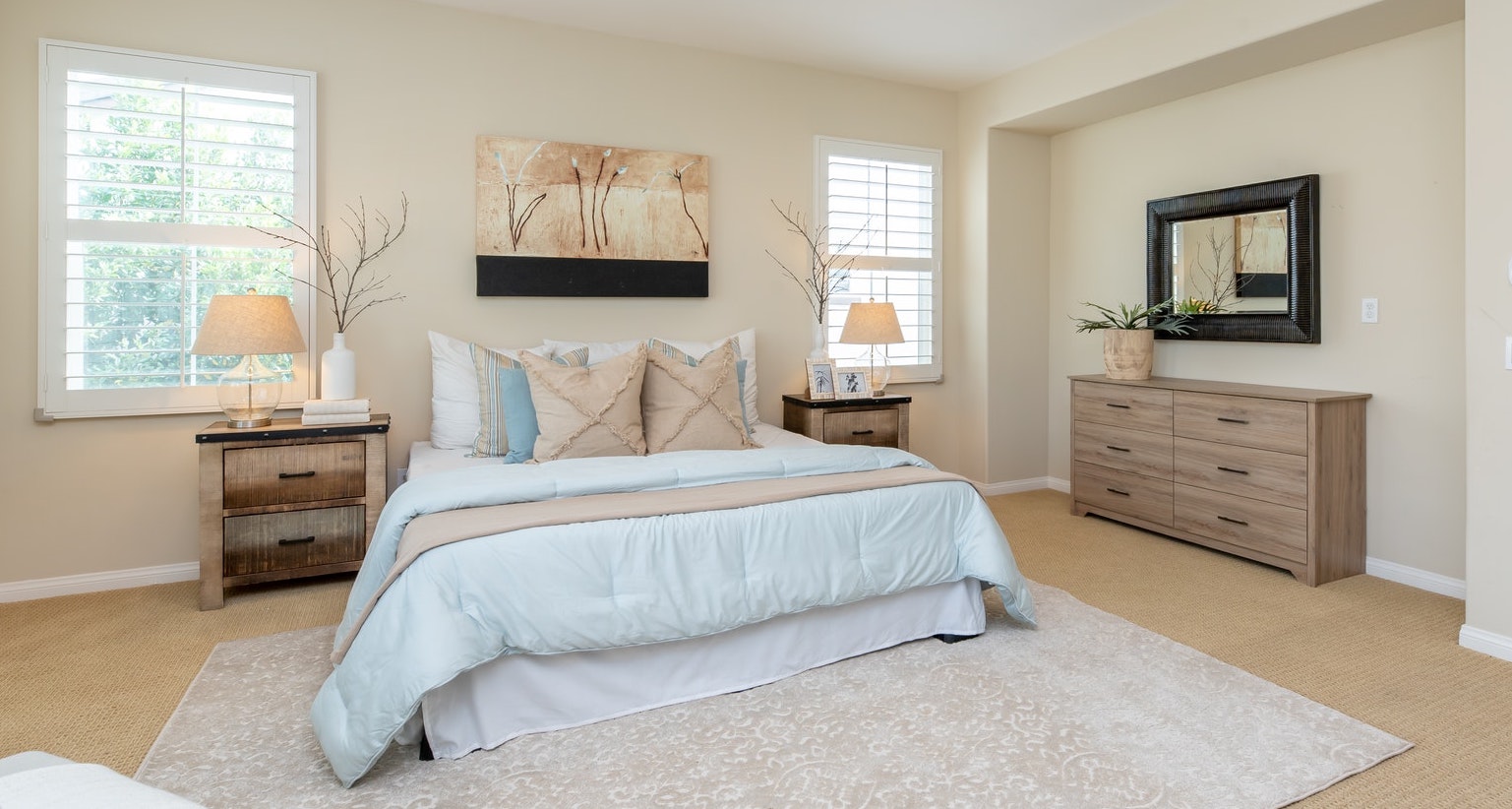

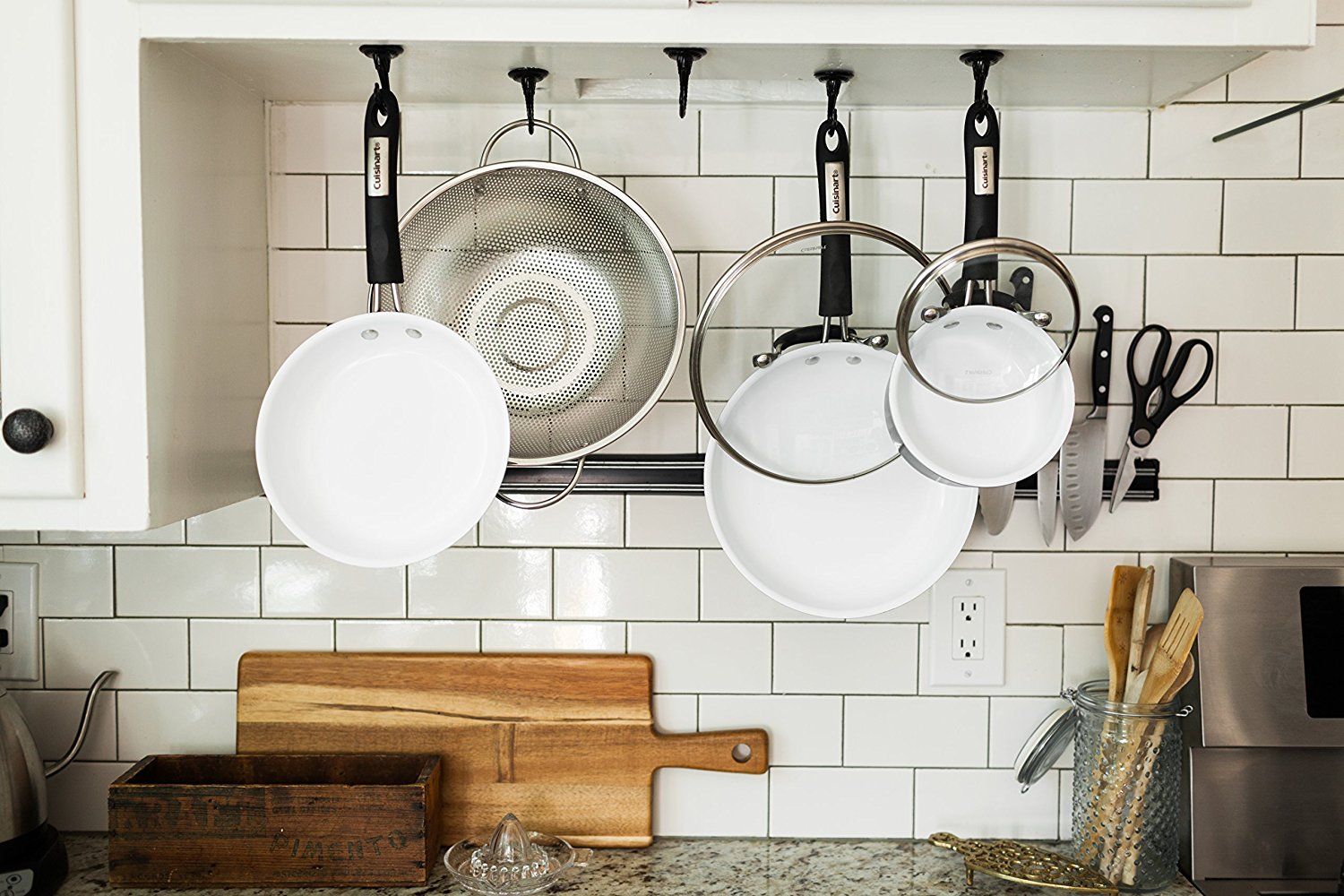
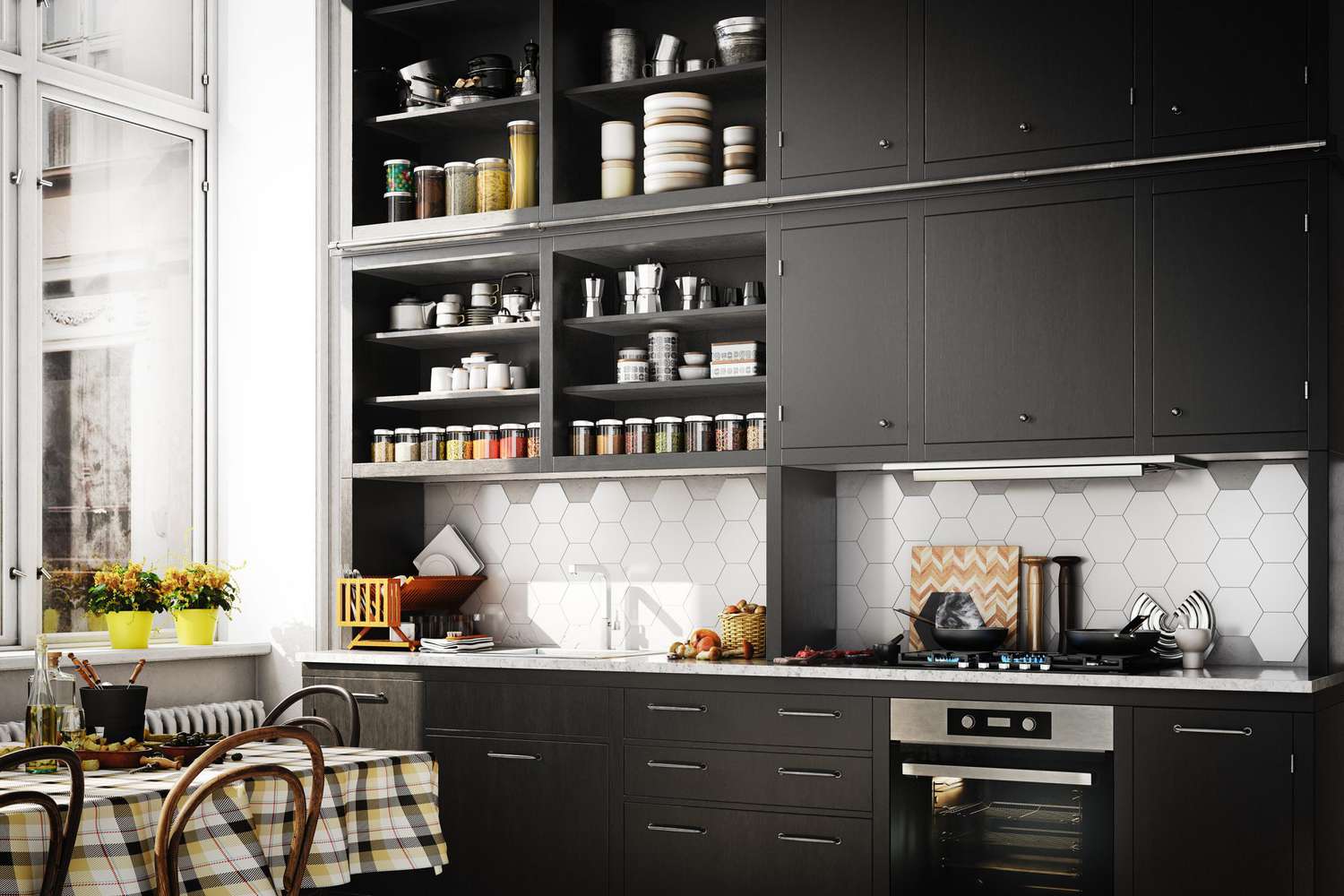
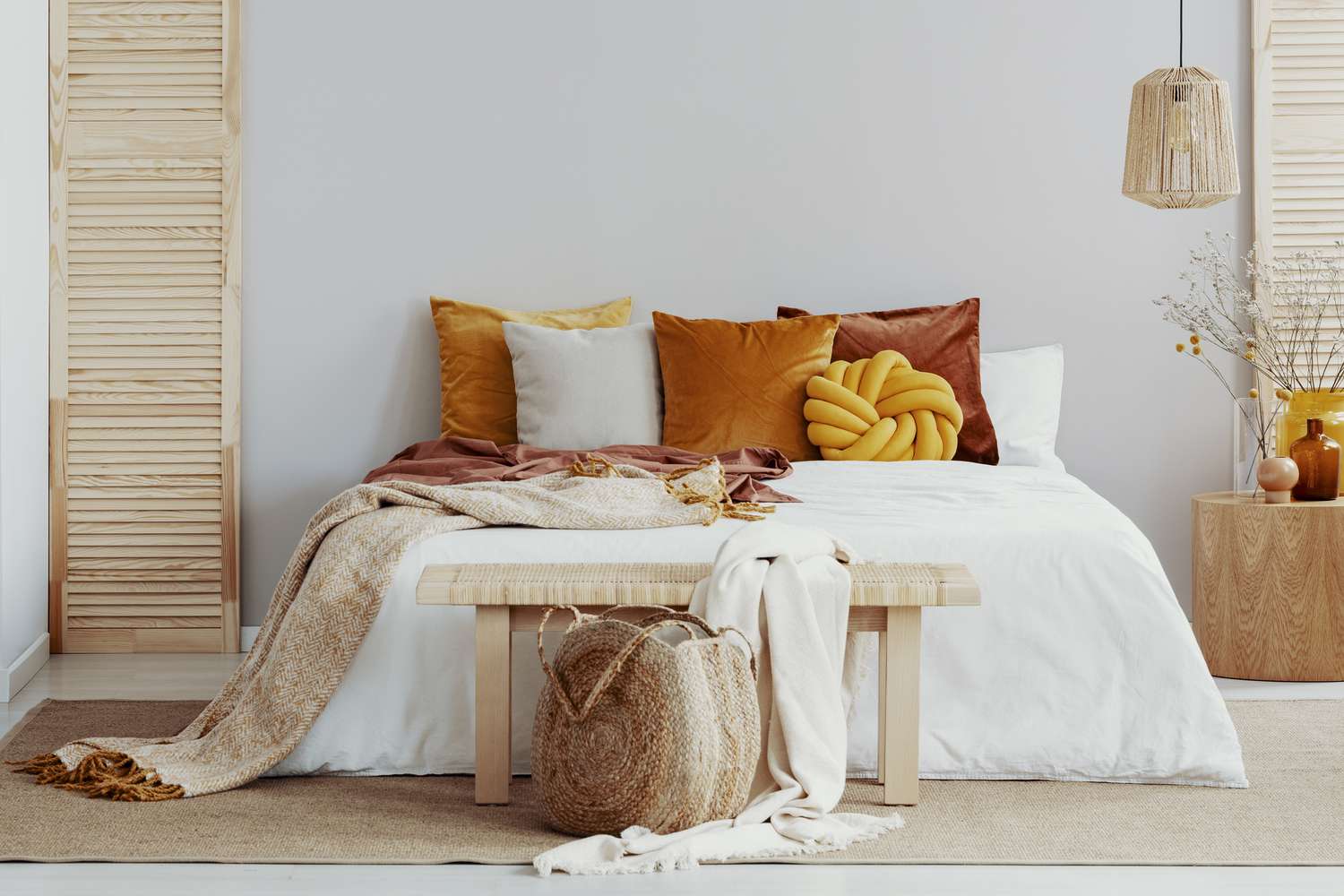
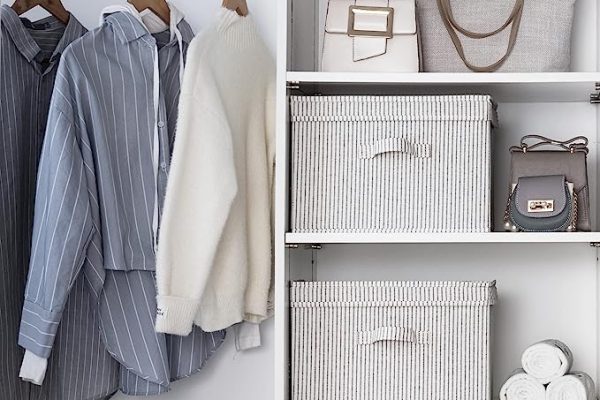
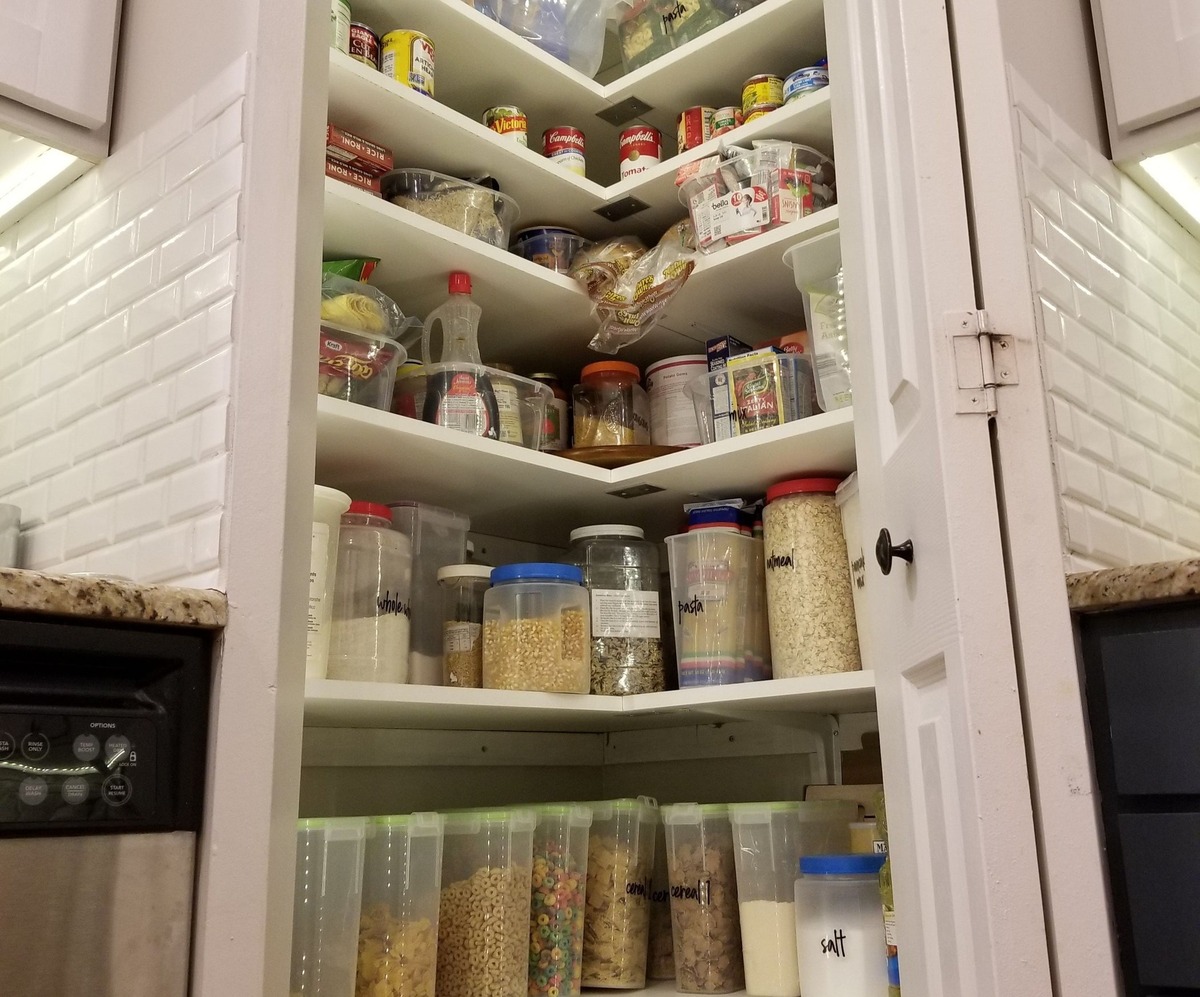
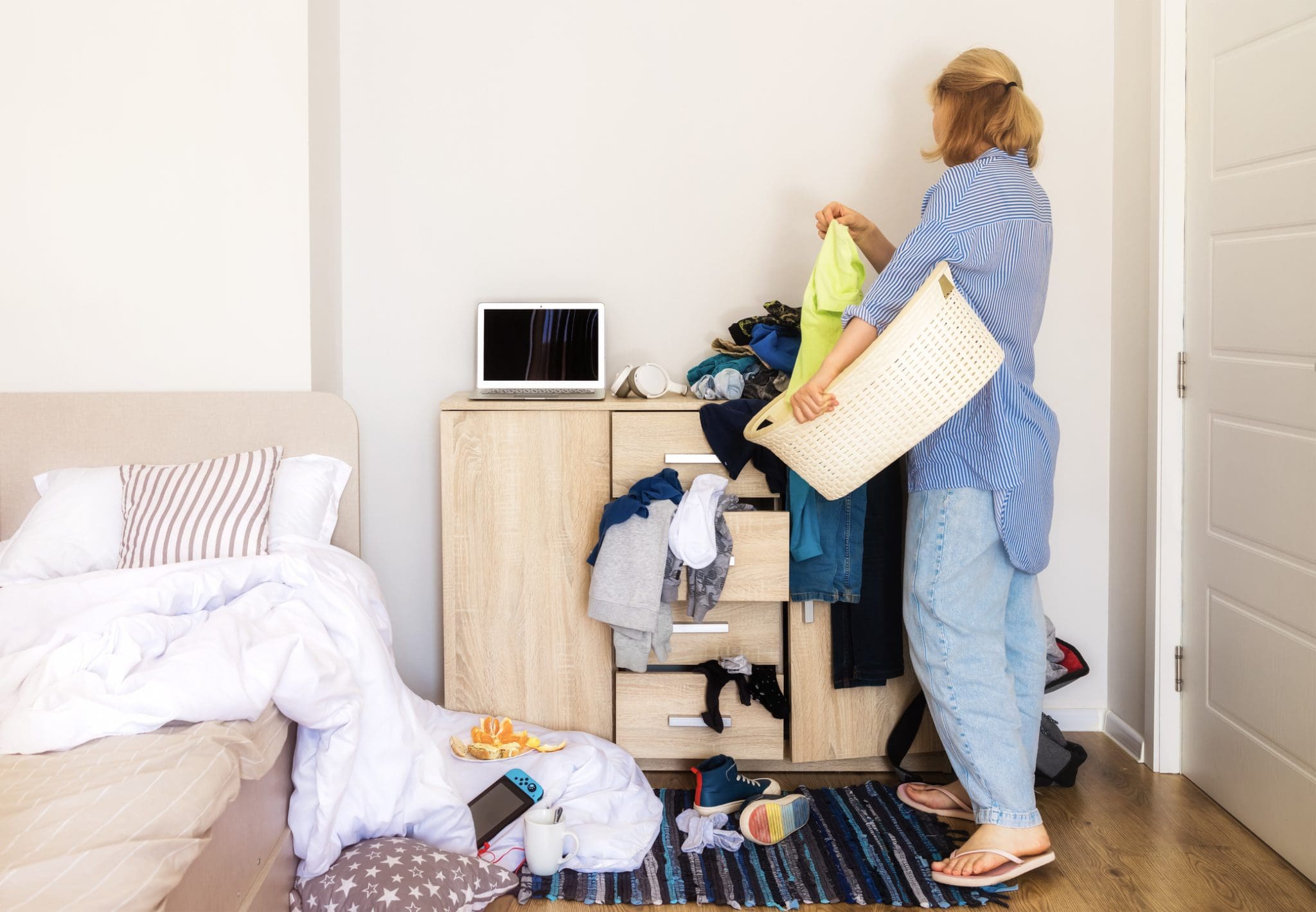
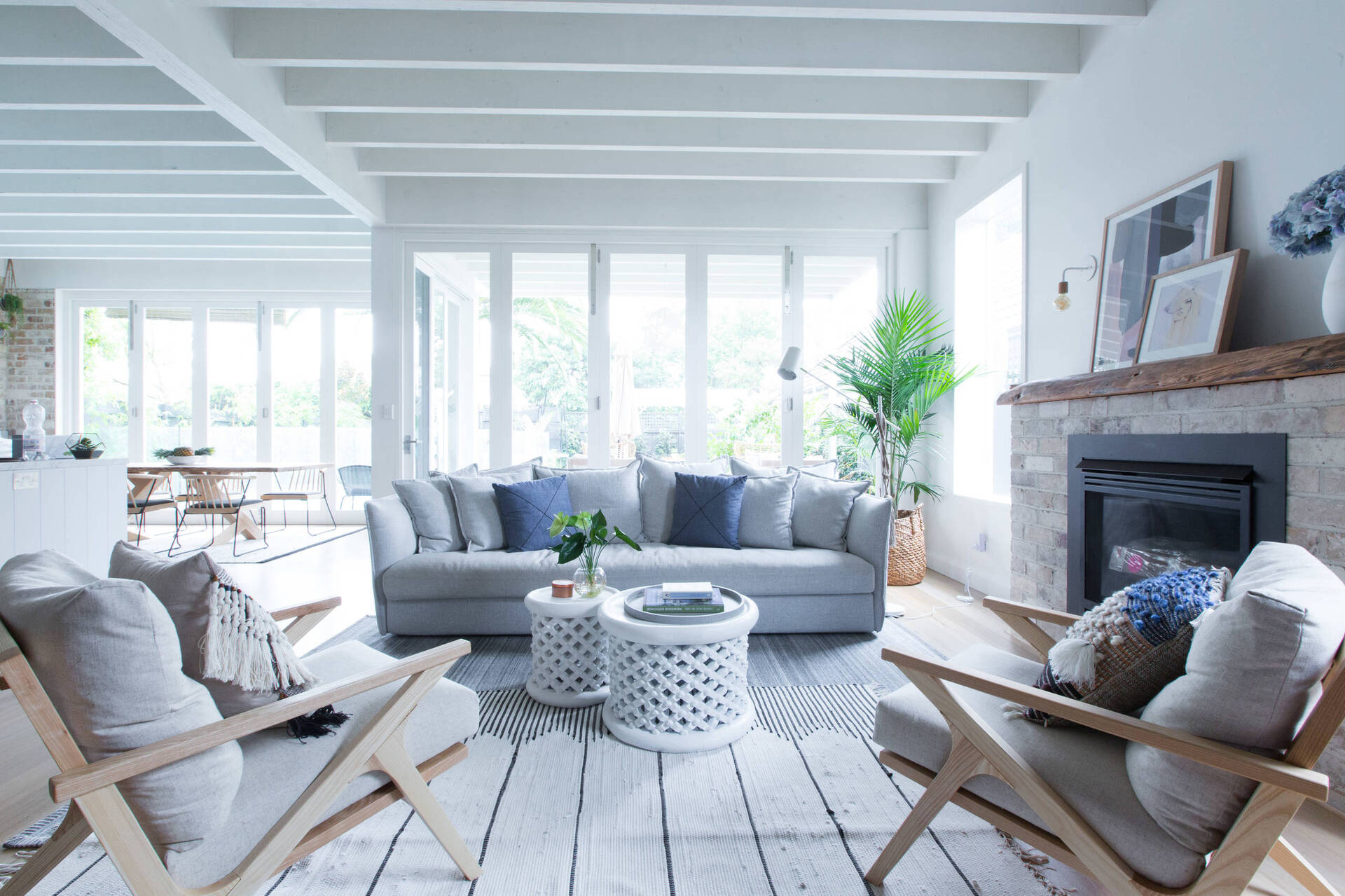
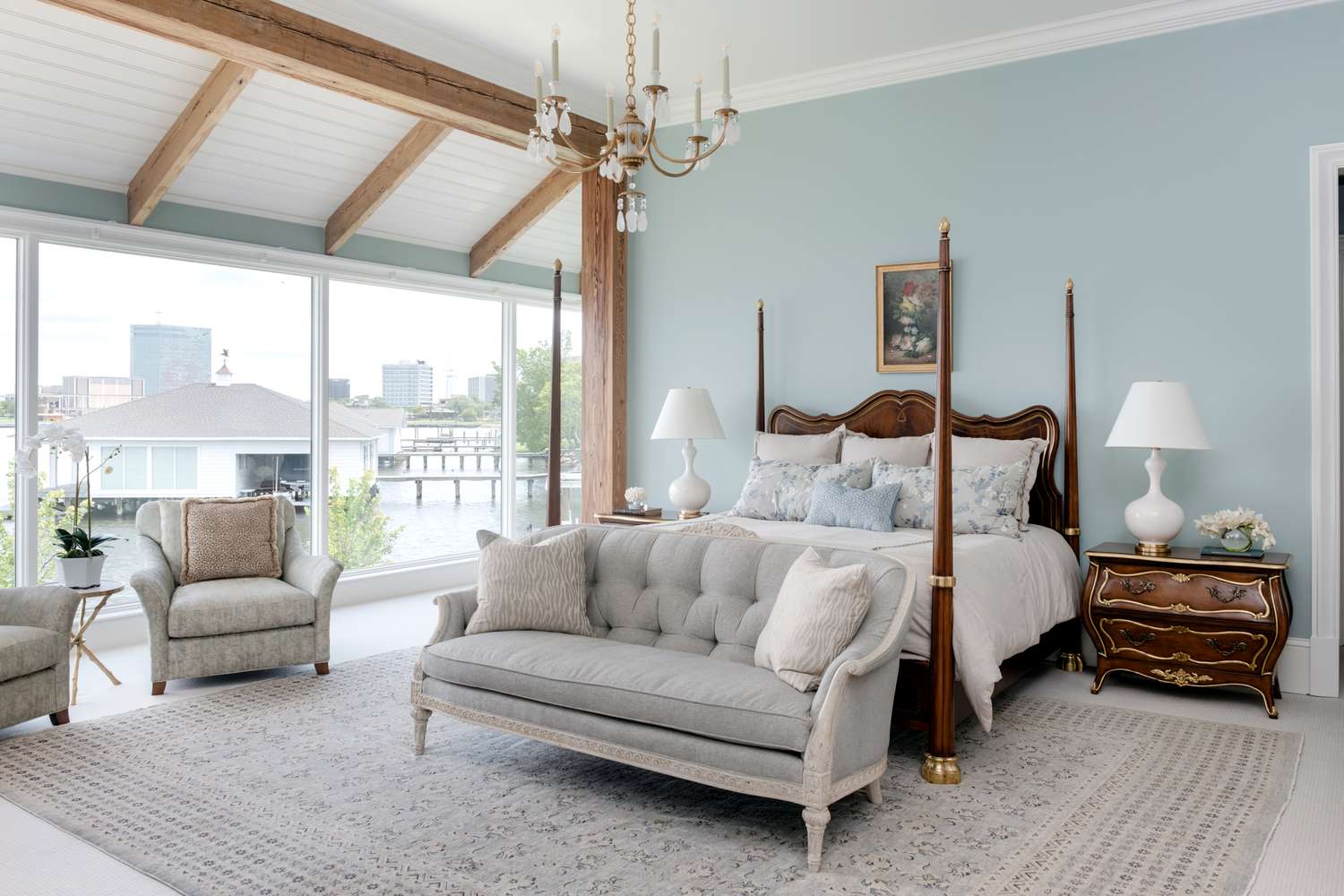
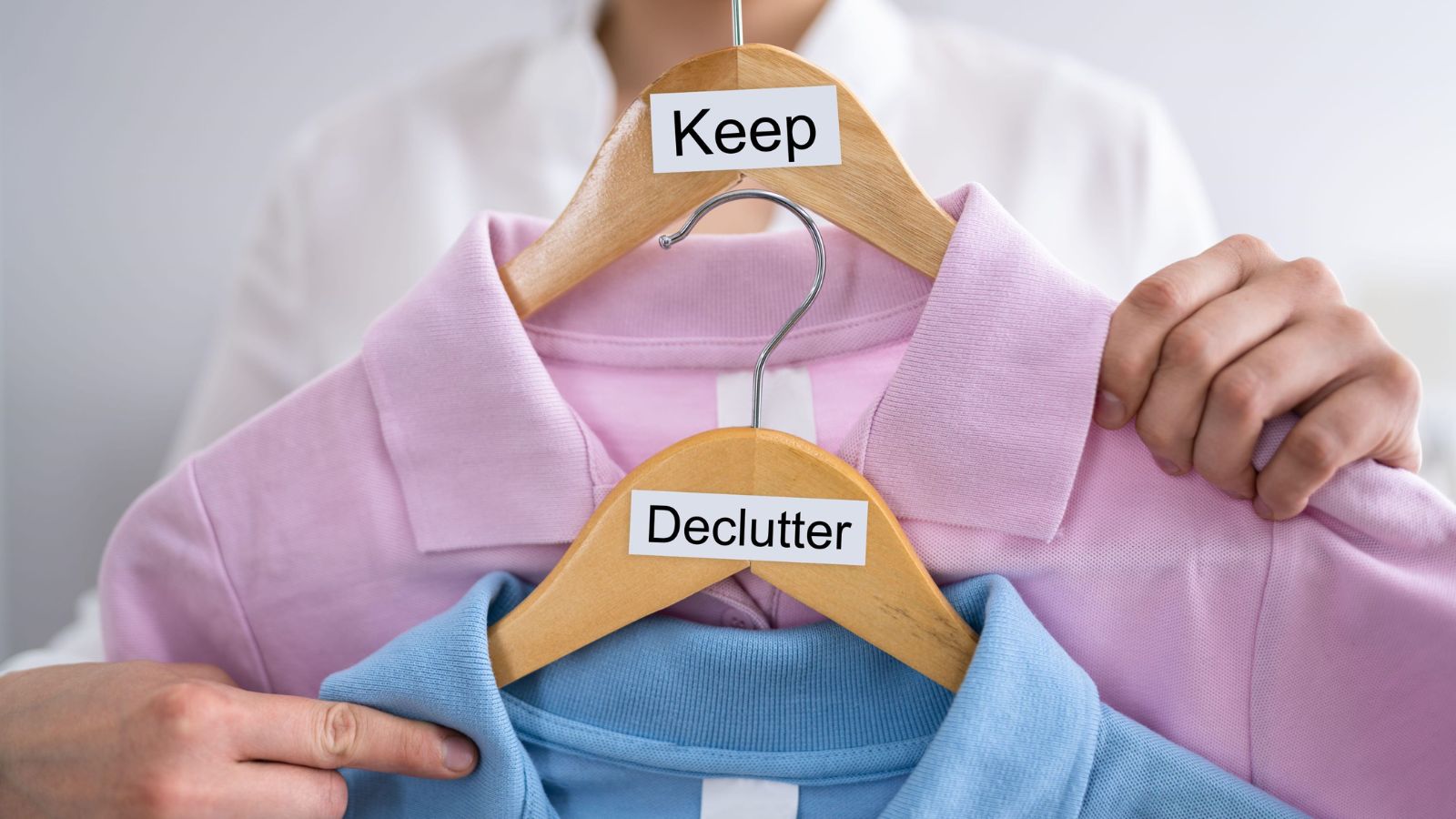



0 thoughts on “How Do I Declutter My Clothes Fast? The Top 10 Strategies Organizers Swear By”